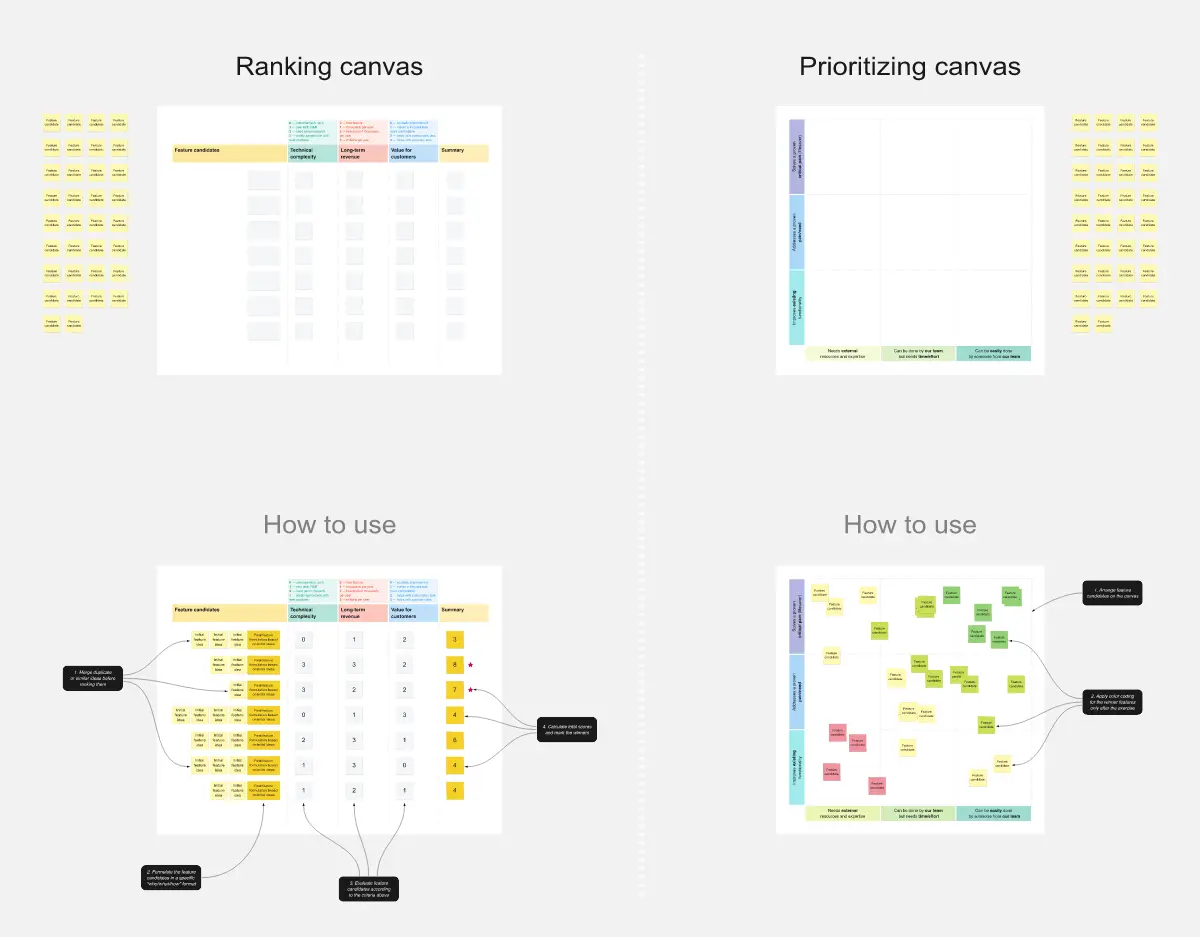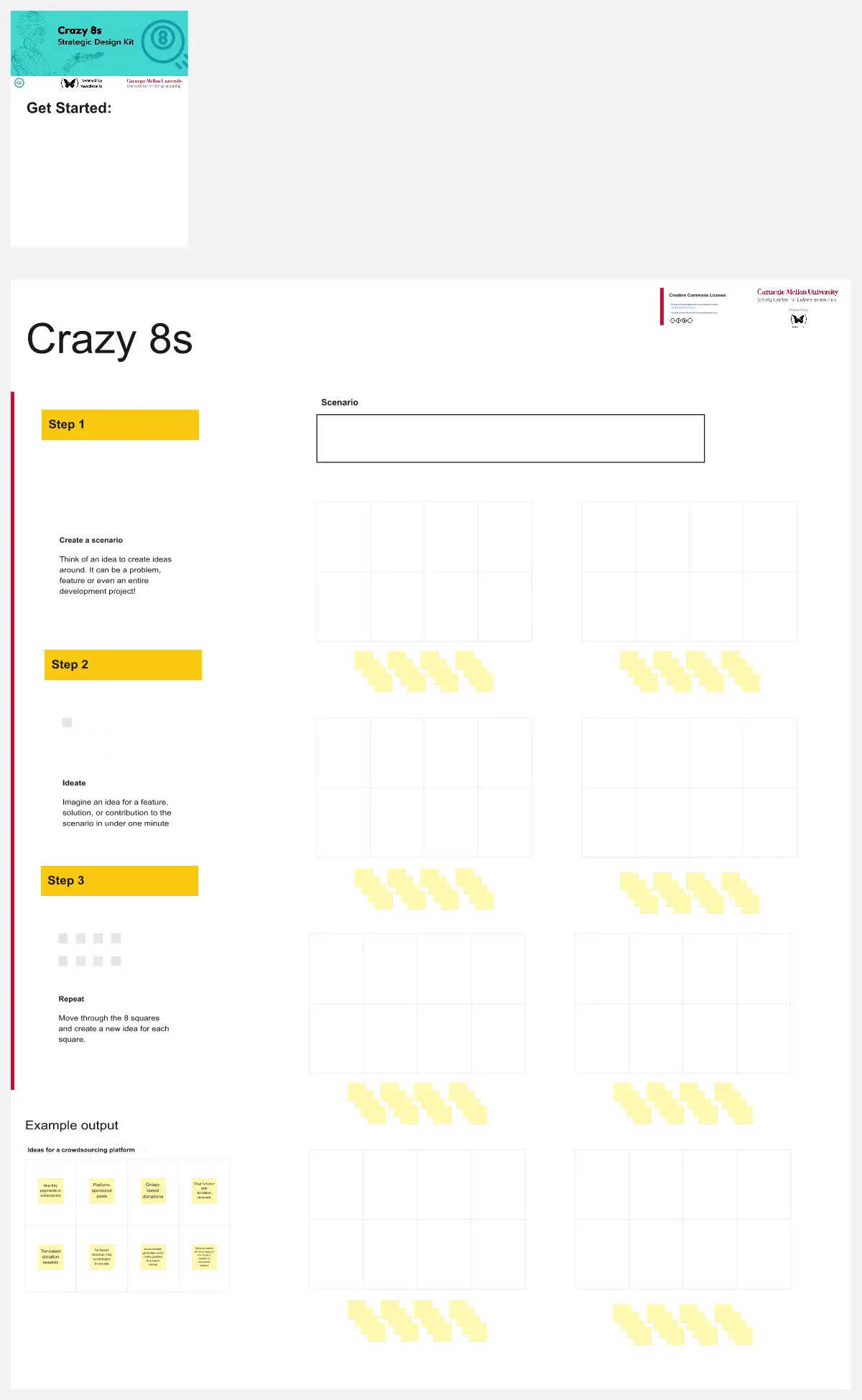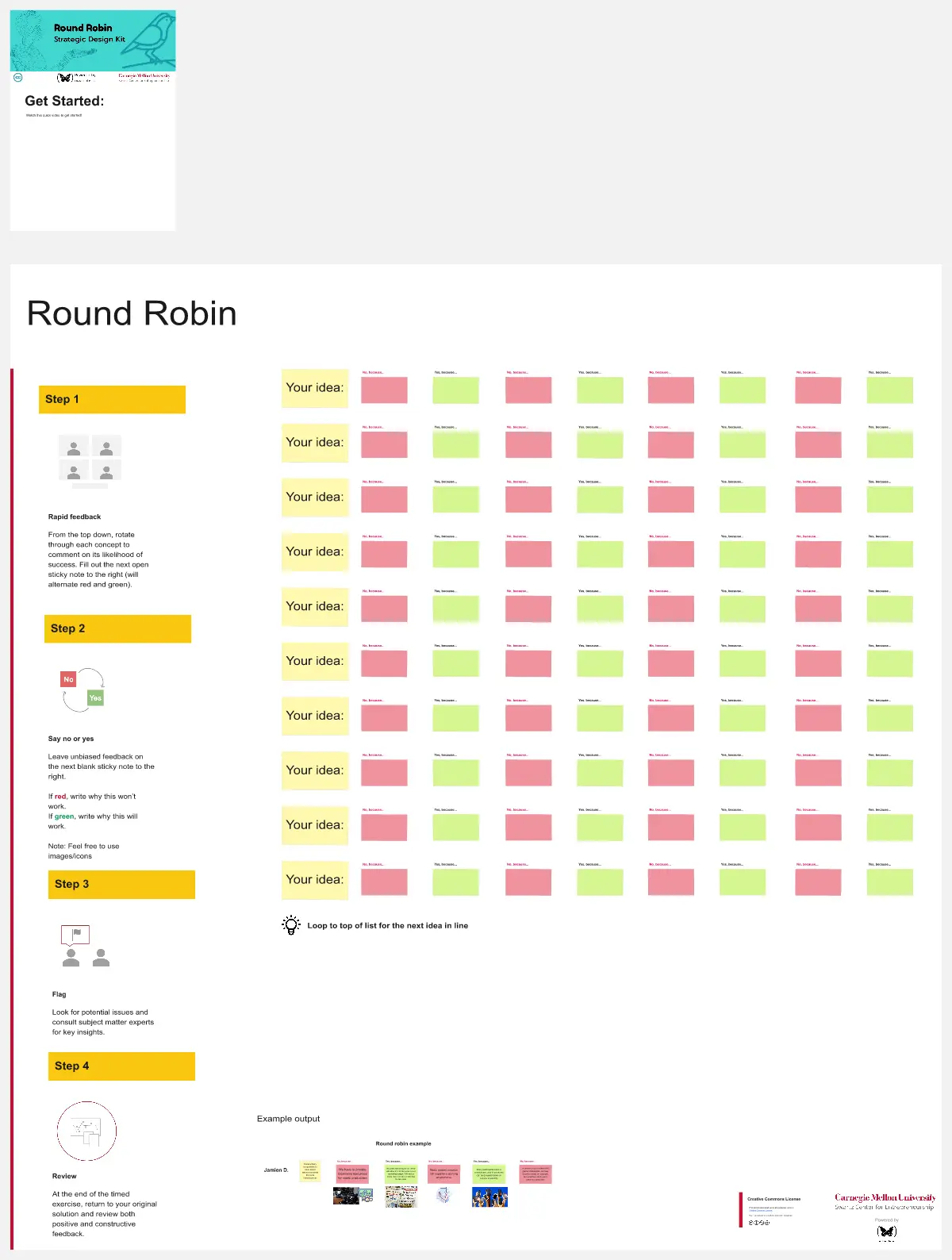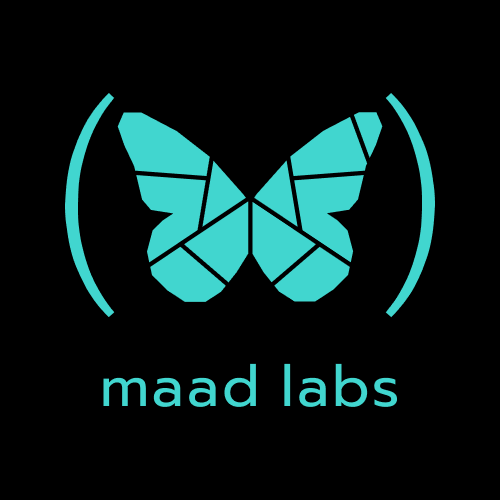Affinity Map
Affinity mapping is an organizational exercise that uses a process of clustering ideas together by a certain principle to help figure out groupings within data that is qualitative.
When should I use an affinity map?
So what would be a good example or use case for an affinity map? Well, maybe you have just ideated with your team and you’re trying to figure out what the next big thing is that you should consider building. Especially if you and your team dropped a whole bunch of ideas - far too many of them for you to make sense of. These would both be great opportunities to use an affinity mapping technique.
How to use this template
Begin by brainstorming your ideas. You can capture your ideas on the yellow sticky notes. Writing one idea per note, think of ideas related to this challenge. Next, you’ll want to assign one person to be the starter. The starter will then choose a sticky note that they are particularly passionate about and see if others have sticky notes that support or relate to the topic. Any notes that have some commonalities or themes should be placed closer together on the board. At this point, everyone will begin to cluster and categorize the sticky notes or ideas. Move any additional sticky notes to the chosen topic or idea. If a cluster appears or starts to form, the facilitator might add a red sticky note to identify the category. Place red category sticky notes above their respective cluster to easily identify them. These categories will help to expose groups of related thinking.
Cluster by meaning
When there's a lot of data and you could be grouping it in many different ways, sometimes it can be difficult to determine what really makes sense for your project. Clusters can be oddly complicated at times, so it’s important to remember to cluster by meaning, not by superficial or surface level groupings. If we wanted to sort something by just by words, we could easily put it into some kind of quantitative tool and then do word analysis. That's not what an affinity map is really about, though. What we're trying to do is look for meaning. Sometimes this meaning can be hidden and can come from your project definition itself. Bringing back your project goals and definition can be a useful practice to help you find new ideas that resonate when clustering. Consider thinking about what you are expecting to report back on, as well as what you would be considering in the future. Additionally, you’ll want to think about the lens you’re using to group concepts together. When using your affinity map, make sure to cluster intuitively, as it makes sense to you, your team, and your project. This type of organization can look very different based on the project, team, or focus. Luckily, there’s no right answer in how you cluster as long as you are doing it thoughtfully and with meaning.
Step 1: Brainstorm - Using yellow sticky notes, think of ideas related to the challenge. Write one idea per note.
Step 2: Choose a starter - Assign one person to choose a note they are particularly passionate about. Next, see if others have sticky notes that support that topic. Ask them to place the notes close together on the board. Cluster & categorize - Everyone is encouraged to move additional sticky notes to the chosen topic. If a cluster appears, the facilitator might add a red category sticky note above. Categories help expose groups of related thinking.
Step 3: Name themes - Cluster related categories under a new green theme. This is the highest level of organization for your ideas.
Watch a video
Categories
Similar templates




